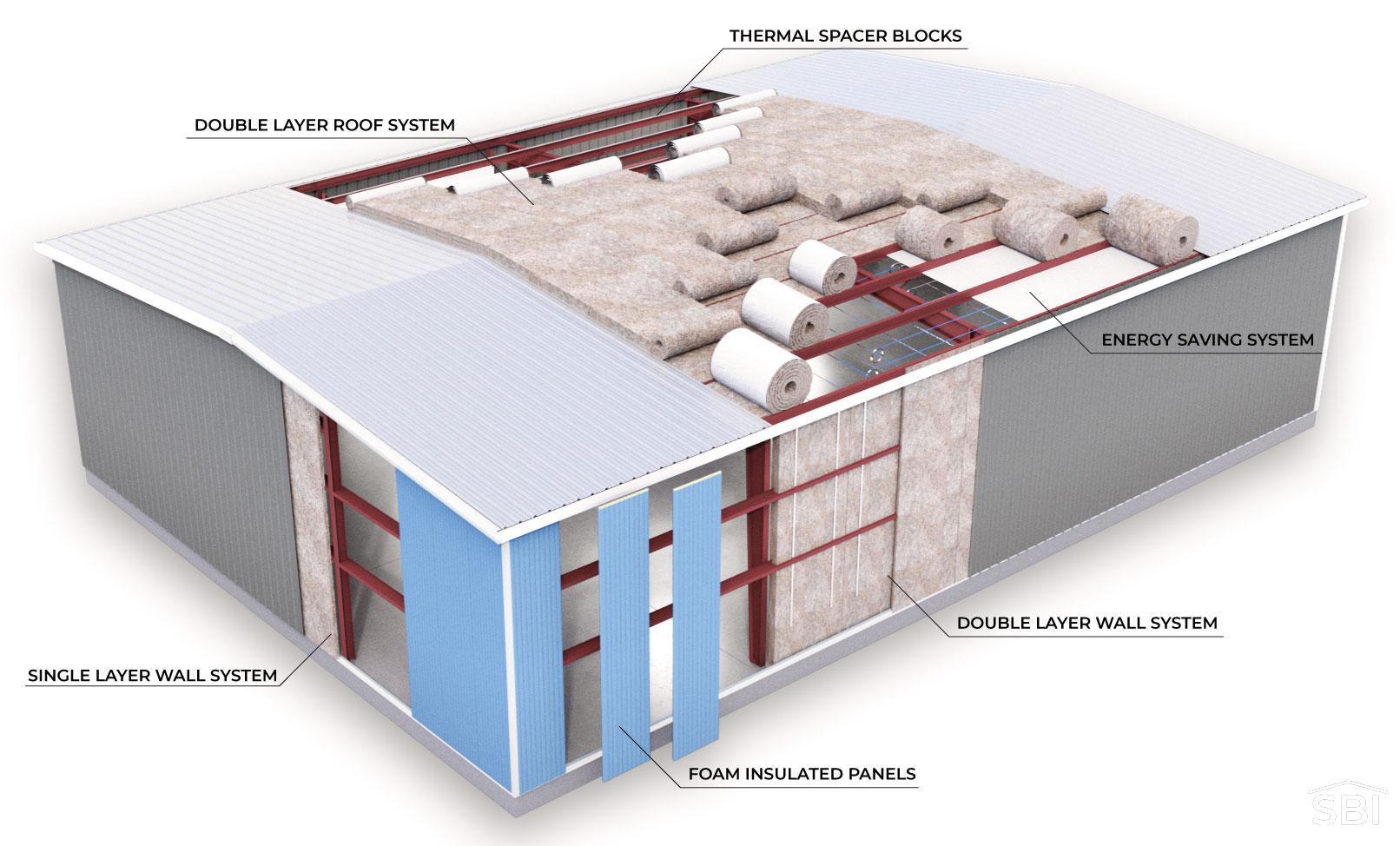While it’s common to find advocates of a specific metal building insulation type, each extolling the virtues of their product, this article is dedicated to providing a comprehensive, unbiased discussion of the most popular insulation types for metal buildings and pole barns. This commitment to impartiality ensures the reliability of the information you receive, instilling confidence in your decision-making process.
The four most popular metal building insulations
Each of these insulation types have unique practical applications and benefits.
Spray Foam:
Spray foam insulation consists of polyurethane foam. This material expands and hardens, creating a tight seal. Most consider this seal superior to other types in blocking air and moisture within your building. There are two forms of Spray foam: the open cell, which allows some movement, and the closed cell, which provides a higher R-value and moisture protector. Like all insulation types, its purpose is to reduce energy costs and noise. It is applied using special spray equipment by professional installers. While offering superior R-values, it has a higher upfront cost because a professional installer is required.
Foam Board:
Foam board metal building insulation, a widely used type, offers a cost-effective solution. Made from polystyrene, polyisocyanurate, or polyurethane, it balances upfront costs with excellent thermal-resistant qualities, making it popular for retrofit projects and new constructions. Compared to spray foam, its affordability is reassuring, especially since it can be installed without professional assistance, giving you the confidence to make a cost-effective choice.
Fiberglass Insulation:
Fiberglass metal building Insulation, called “Batt,” is essentially long fiberglass blankets with one side usually laminated to a vapor barrier. This facing acts as a moisture blocker and protects the fiberglass. These blankets typically come with a 3-inch tab along the sides to help with installation. If needed, a 6-inch tab is available.
When you get a fiberglass insulation quote, it usually includes double-sided tape and patches. Customers can specify the length of their insulation rolls. Standard widths are 4, 5, and 6 feet. For a low upcharge, customers can have widths cut to desired. This customization may delay the shipping.
Fiberglass insulation is often chosen for residential and commercial buildings because it is versatile, cost-effective, a sound dampener, and easy to install. Fiberglass comes in batts, rolls, or loose-fill types. Batts are pre-cut sections of fiberglass designed to fit standard spacing between wall studs and floor joists, making them easy to handle and install. Rolls provide continuous insulation like batts but must be cut to size during installation because most sellers have it already pre-wrapped to lengths of usually 80’. Rolls are suitable for covering large areas, just as long as there aren’t obstructions. Loose-fill, or blown-in fiberglass, is made of tiny particles. It is often blown into attics or walls. A plus is that it can effectively fill gaps that roll and batt can’t. Remember that all these insulation types are adequate for their distinct purpose. Each form offers distinct installation methods and is chosen based on the specific needs of the insulated space.
Some consider fiberglass a negative aspect because one should wear protective gear when installing hazardous materials. Also, the R-value can be reduced over time due to moisture penetration. Therefore, periodic maintenance is recommended.
In recent years, Reflective metal building insulation, or radiant barrier insulation, has aggressively entered the market. It reduces heat transfer by reflecting radiant heat away, lowering cooling costs in hot and sunny climates. Suppliers use different materials to make up their reflective insulation. It typically consists of layers of reflective materials, like aluminum foil, plastic film, cardboard, or kraft paper. The higher quality reflective insulation companies’ materials consist of:
- Reflective reinforce foil
- Polyethylene backing
- Close-cell polyethylene foam center
- Reflective reinforce foil
It is lightweight and ideal for retrofit projects and new construction. However, it may not be the perfect insulation for frigid climates. Again, each insulation type has its advantages and disadvantages. You should choose the best insulation based on your climate and desired insulation purpose.


